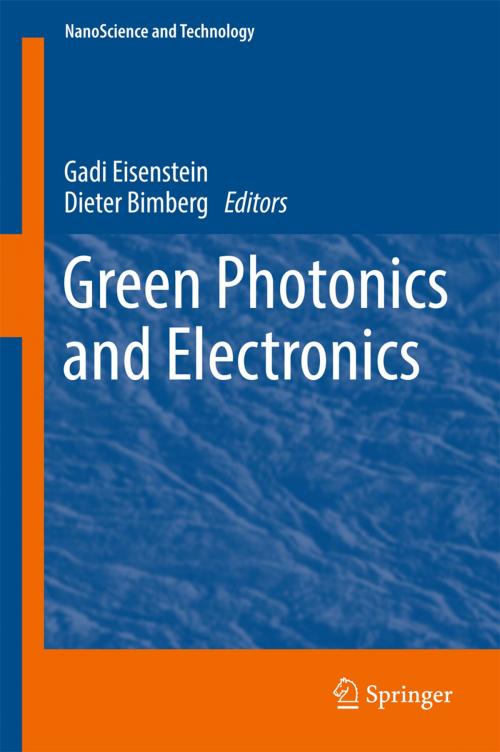Green Photonics and Electronics
Nonfiction, Science & Nature, Technology, Lasers, Science, Physics, Energy| Author: | ISBN: | 9783319670027 | |
| Publisher: | Springer International Publishing | Publication: | November 18, 2017 |
| Imprint: | Springer | Language: | English |
| Author: | |
| ISBN: | 9783319670027 |
| Publisher: | Springer International Publishing |
| Publication: | November 18, 2017 |
| Imprint: | Springer |
| Language: | English |
This books focuses on recent break-throughs in the development of a variety of photonic devices, serving distances ranging from mm to many km, together with their electronic counter-parts, e.g. the drivers for lasers, the amplifiers following the detectors and most important, the relevant advanced VLSI circuits. It explains that as a consequence of the increasing dominance of optical interconnects for high performance workstation clusters and supercomputers their complete design has to be revised. This book thus covers for the first time the whole variety of interdependent subjects contributing to green photonics and electronics, serving communication and energy harvesting. Alternative approaches to generate electric power using organic photovoltaic solar cells, inexpensive and again energy efficient in production are summarized.
In 2015, the use of the internet consumed 5-6% of the raw electricity production in developed countries. Power consumption increases rapidly and without some transformational change will use, by the middle of the next decade at the latest, the entire electricity production. This apocalyptic outlook led to a redirection of the focus of data center and HPC developers from just increasing bit rates and capacities to energy efficiency. The high speed interconnects are all based on photonic devices. These must and can be energy efficient but they operate in an electronic environment and therefore have to be considered in a wide scope that also requires low energy electronic devices, sophisticated circuit designs and clever architectures. The development of the next generation of high performance exaFLOP computers suffers from the same problem: Their energy consumption based on present device generations is essentially prohibitive.
This books focuses on recent break-throughs in the development of a variety of photonic devices, serving distances ranging from mm to many km, together with their electronic counter-parts, e.g. the drivers for lasers, the amplifiers following the detectors and most important, the relevant advanced VLSI circuits. It explains that as a consequence of the increasing dominance of optical interconnects for high performance workstation clusters and supercomputers their complete design has to be revised. This book thus covers for the first time the whole variety of interdependent subjects contributing to green photonics and electronics, serving communication and energy harvesting. Alternative approaches to generate electric power using organic photovoltaic solar cells, inexpensive and again energy efficient in production are summarized.
In 2015, the use of the internet consumed 5-6% of the raw electricity production in developed countries. Power consumption increases rapidly and without some transformational change will use, by the middle of the next decade at the latest, the entire electricity production. This apocalyptic outlook led to a redirection of the focus of data center and HPC developers from just increasing bit rates and capacities to energy efficiency. The high speed interconnects are all based on photonic devices. These must and can be energy efficient but they operate in an electronic environment and therefore have to be considered in a wide scope that also requires low energy electronic devices, sophisticated circuit designs and clever architectures. The development of the next generation of high performance exaFLOP computers suffers from the same problem: Their energy consumption based on present device generations is essentially prohibitive.















